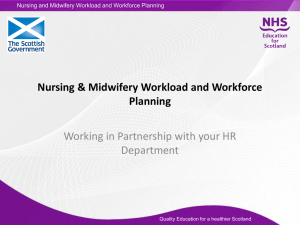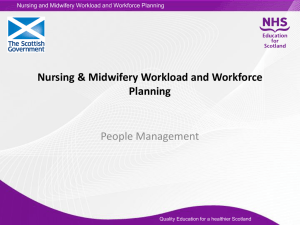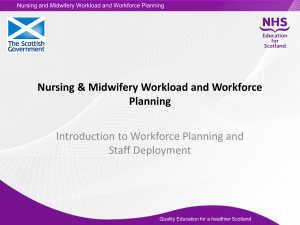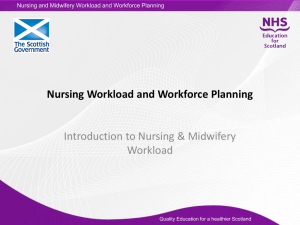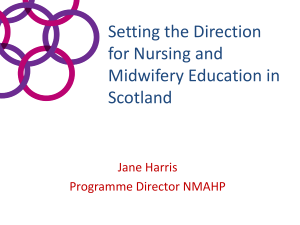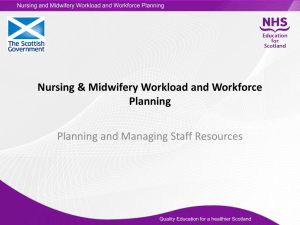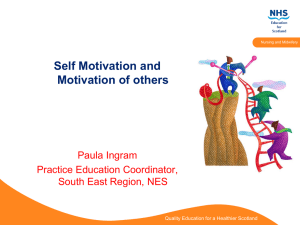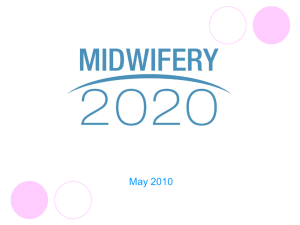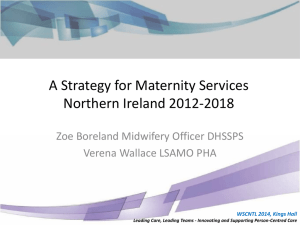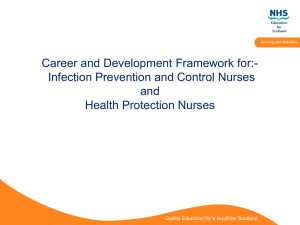Skill Mix - NHS Education for Scotland
advertisement
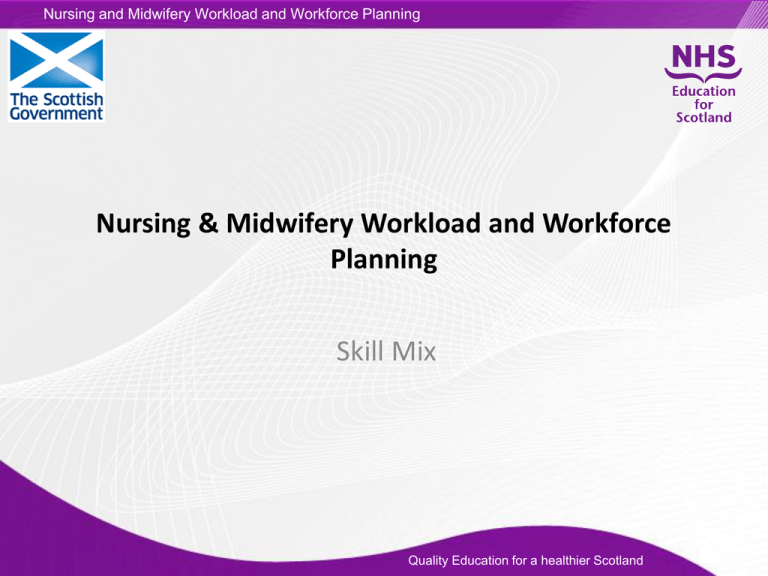
Nursing and Midwifery Workload and Workforce Planning Nursing & Midwifery Workload and Workforce Planning Skill Mix Quality Education for a healthier Scotland Nursing and Midwifery Workload and Workforce Planning What is Skill Mix? • Gibbs et al (1991) defined grade/ band mix as a mix of differing grades of staff in a particular working environment, their costs and activities. • Grade mix does not reflect the skills of the staff concerned or the needs of their clients • Skill mix refers to the skills and experience of staff, their continuing education and professional development, years of experience and how they bring these together to influence their professional judgement. • Skill mix connects “needs” with skills available and outcomes in a particular working environment with a specific client group Quality Education for a healthier Scotland Nursing and Midwifery Workload and Workforce Planning Definition The term ‘skill mix’ can refer to: • the mix of posts in the establishment; the mix of employees in a post; • the combination of skills available at a specific time; • or alternatively, it may refer to the combinations of activities that comprise each role, rather than the combination of different job titles. Buchan J, Ball J, O’May F, 2000 Quality Education for a healthier Scotland Nursing and Midwifery Workload and Workforce Planning Skill Mix: Considerations • good skill mix contributes to the quality of patient care, patient satisfaction and clinical outcomes. • nursing staff costs are rising and the labour market shrinking • does a rich skill mix of mostly registered staff give a higher quality of care than cheaper skill mix of mostly unregistered staff? • skill mix estimation includes the competency of staff matched to the care needs of patients • can be a sensitive issue • can be seen as an opportunity to maximise effectiveness of budget and/or enhance the quality of care • no such thing as optimum skill mix Quality Education for a healthier Scotland Nursing and Midwifery Workload and Workforce Planning Reviewing and Determining Skill Mix Consider: • what type of work needs to be carried out? • how many staff so we need? • what type of staff do we need? • could another (less skilled) member of staff do this activity? • should an non-registered member of staff be given responsibility for this activity – would a registered nurse be more appropriate? • are staff with such skills available? • can quality of care be maintained? • what are the budgetary constraints? Quality Education for a healthier Scotland Nursing and Midwifery Workload and Workforce Planning Time Frames Skill mix can be planned over four overlapping timeframes: • operationally – the mix of staff actually deployed on duty • short term – the plan for the mix of skills to be utilised on the roster • medium term – the plan to make adjustments to an establishment’s skill mix to reflect changing priorities, changing case mix or changing workload • long term – the strategic plan of the numbers of staff and skills required Quality Education for a healthier Scotland Nursing and Midwifery Workload and Workforce Planning The Skill Mix Cycle Evaluating the need for change (define the problem) Making change happen (identify and implement solution) Identifying opportunities for change (span of control) Planning for change (assess resources) Quality Education for a healthier Scotland Nursing and Midwifery Workload and Workforce Planning New and Enhanced Roles • roles change as professionals expand existing roles other staff are required to take on some aspects of a previous role • healthcare professionals may develop new roles which are designed to fit within their scope of practice, e.g. new clinical nurse specialist roles and emergency nurse practitioner roles: • extension of professional practice for an individual group – partnership approach to developments will be vital in such circumstances Quality Education for a healthier Scotland Nursing and Midwifery Workload and Workforce Planning New and Enhanced Roles • completely new roles may be developed which do not fit existing professional boundaries, e.g. healthcare support staff who work between nursing, physiotherapy and occupational therapy. Filled by: – existing healthcare staff – staff new to the health service with appropriate training and education Quality Education for a healthier Scotland Nursing and Midwifery Workload and Workforce Planning Framework for Framework for Developing Nursing Roles Consultation (SEHD, 2004b) • “The distinction between role development and role expansion should no longer be a key issue for the profession. • The critical issues are – ensuring the delivery of high quality care – safe practice for patients and communities – reflecting health needs • The expansion and development of professional practice and skills should be focused on the needs of the patient and the community based on sound evidence, to enhance clinical credibility and the exercise of professional autonomy.” Quality Education for a healthier Scotland
